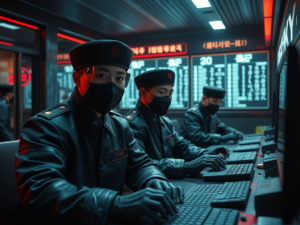Vitalik Buterin on Ethereum’s Scalability and Decentralization

During a recent Q&A session on Tako, Ethereum co-founder Vitalik Buterin shared insights into the blockchain’s future, focusing on its scalability and decentralization. His remarks underscored Ethereum’s ongoing evolution and the challenges it faces in maintaining a balance between efficiency and decentralization.
Balancing Layer 1 and Layer 2 Solutions
Buterin emphasized that Ethereum’s growth depends on a well-balanced combination of Layer 1 (L1) and Layer 2 (L2) solutions. He explained that while L1 should remain the foundation for high-security transactions, L2 can handle most daily operations, significantly improving scalability and user experience. To support this vision, he pointed to two key developments: increasing gas limits on L1 and implementing stateless verification methods such as Verkle trees. These upgrades aim to make Ethereum more efficient without compromising decentralization.
Decentralization as a Core Principle
Addressing concerns about centralization, Buterin reaffirmed Ethereum’s commitment to decentralization. He stressed that the network operates independently of the Ethereum Foundation, ensuring that no single entity controls its future. Additionally, he discussed the role of sequencers—key players in processing L2 transactions—and emphasized the importance of keeping them open and accessible to prevent concentration of power. Ongoing improvements in governance, security, and scalability will be critical in maintaining Ethereum’s decentralized nature.
Ethereum’s Market Position
Buterin’s comments come at a time when Ethereum remains a dominant force in the crypto market. The blockchain continues to evolve, with developers actively working on solutions that balance usability and decentralization. Despite challenges, Ethereum’s long-term vision remains focused on enabling a scalable and decentralized digital economy.
His insights reinforce Ethereum’s mission to provide a truly open and trustless financial system, one that continues to adapt to new technological advancements while maintaining its fundamental principles.





 Bitcoin
Bitcoin  Ethereum
Ethereum  Tether
Tether  XRP
XRP  Solana
Solana  USDC
USDC  Dogecoin
Dogecoin  TRON
TRON  Lido Staked Ether
Lido Staked Ether  Cardano
Cardano  Hyperliquid
Hyperliquid  Wrapped Bitcoin
Wrapped Bitcoin  Wrapped stETH
Wrapped stETH  Sui
Sui  Bitcoin Cash
Bitcoin Cash  Chainlink
Chainlink  LEO Token
LEO Token  Avalanche
Avalanche  Stellar
Stellar  Toncoin
Toncoin  Shiba Inu
Shiba Inu  USDS
USDS  WETH
WETH  Wrapped eETH
Wrapped eETH  Litecoin
Litecoin  Hedera
Hedera  Binance Bridged USDT (BNB Smart Chain)
Binance Bridged USDT (BNB Smart Chain)  Ethena USDe
Ethena USDe  Polkadot
Polkadot  Monero
Monero  WhiteBIT Coin
WhiteBIT Coin  Bitget Token
Bitget Token  Coinbase Wrapped BTC
Coinbase Wrapped BTC  Pepe
Pepe  Pi Network
Pi Network  Uniswap
Uniswap  Aave
Aave  Dai
Dai  Ethena Staked USDe
Ethena Staked USDe  Bittensor
Bittensor  OKB
OKB  Internet Computer
Internet Computer  Aptos
Aptos  BlackRock USD Institutional Digital Liquidity Fund
BlackRock USD Institutional Digital Liquidity Fund  NEAR Protocol
NEAR Protocol  Cronos
Cronos  Jito Staked SOL
Jito Staked SOL  Tokenize Xchange
Tokenize Xchange  Ethereum Classic
Ethereum Classic